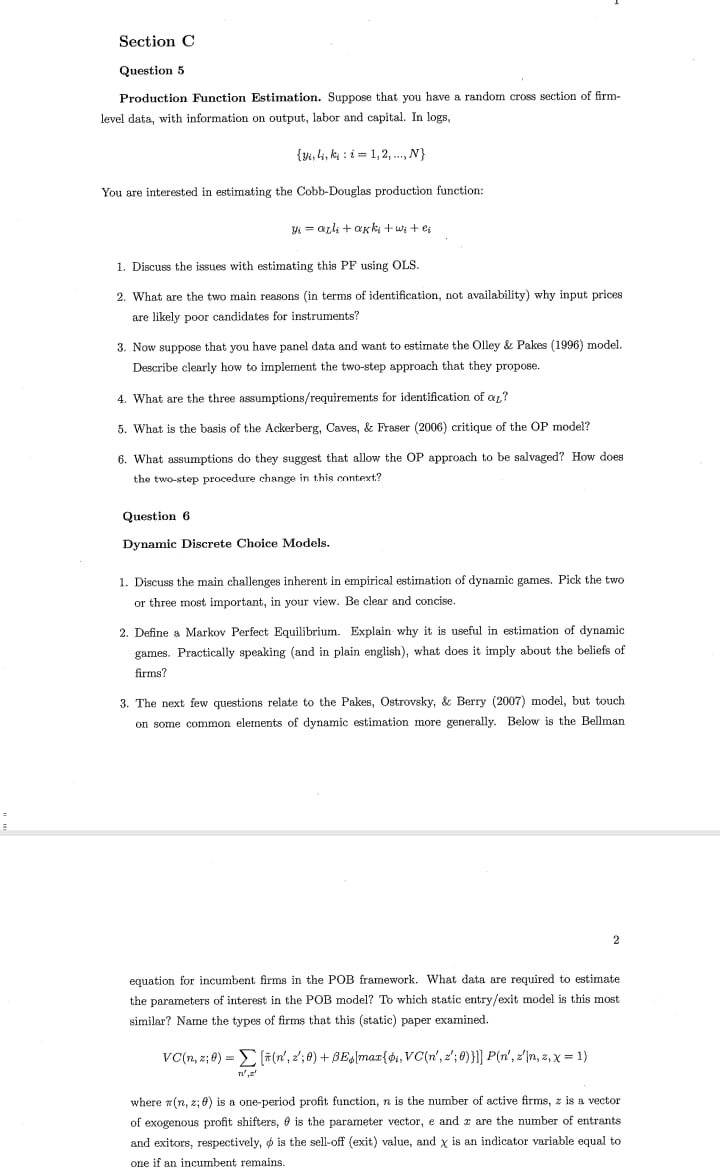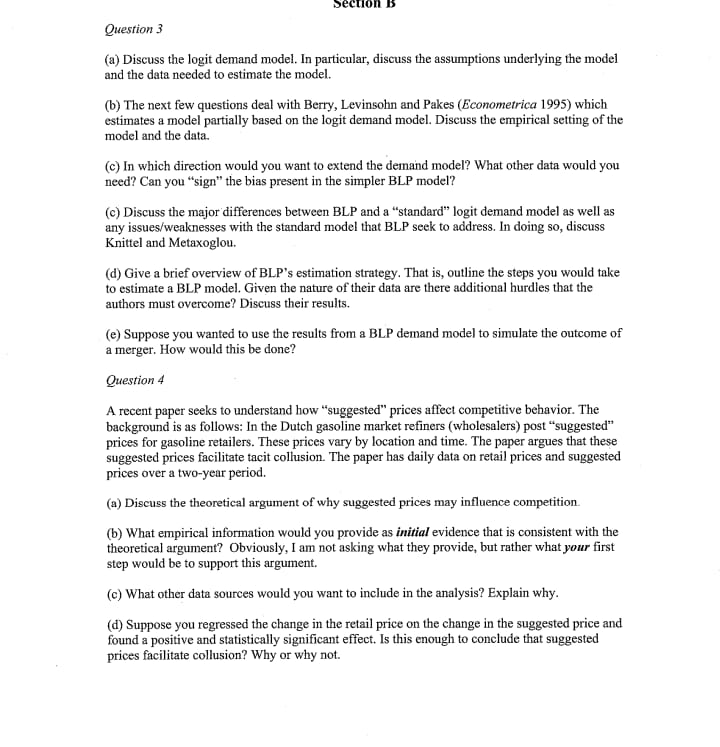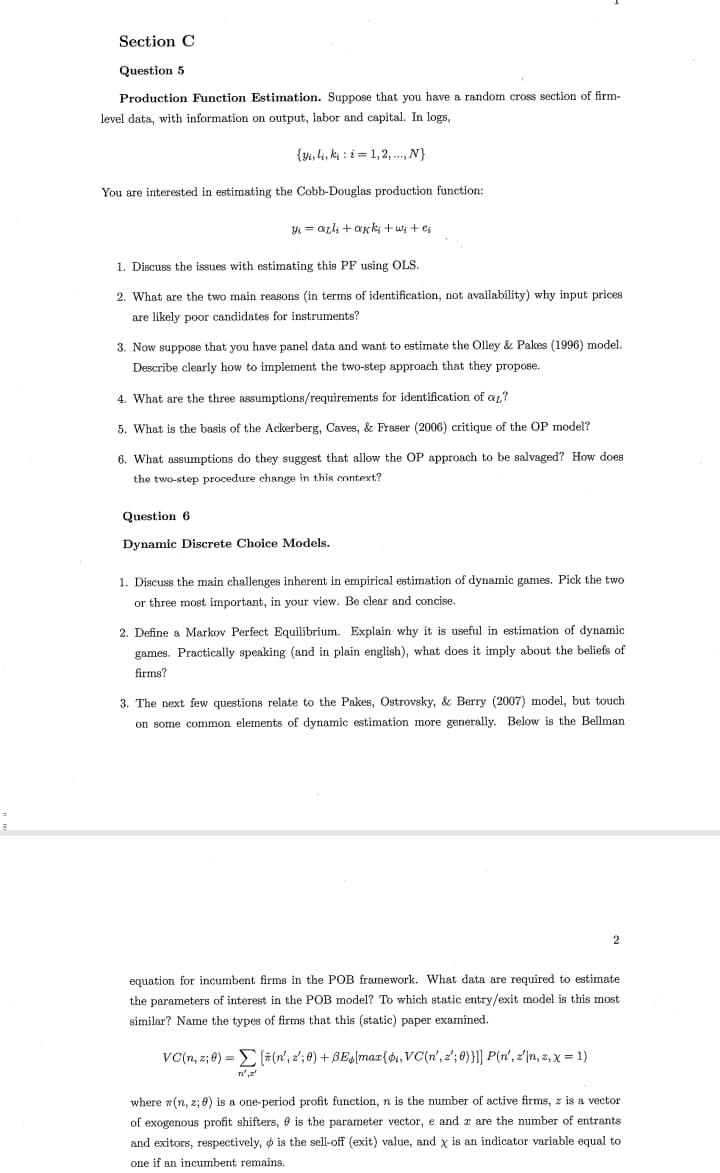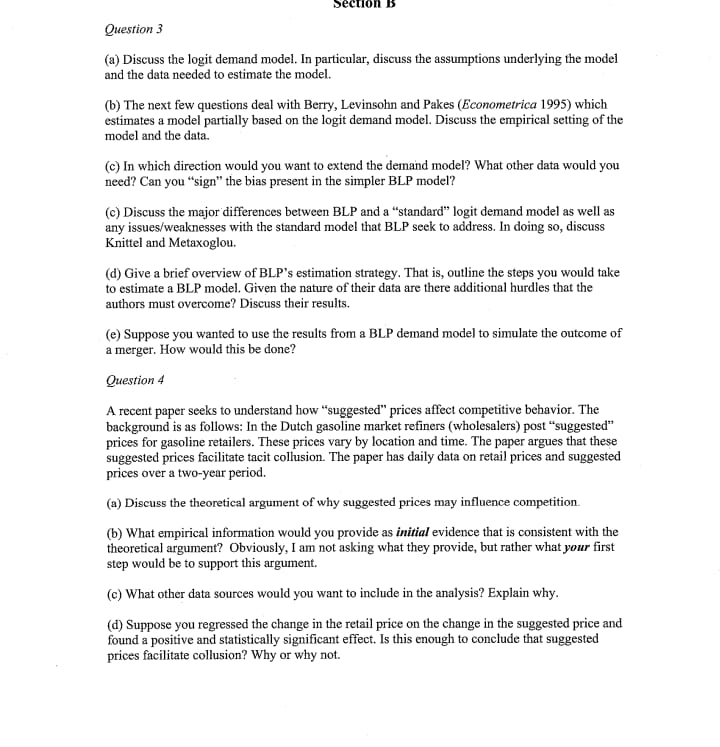Question
...Consider the Mortensen-Pissarides model in continuous time. Labor force is normalized to 1 and there are 2 types of workers. A worker of type i


...Consider the Mortensen-Pissarides model in continuous time. Labor force is normalized to 1 and there are 2 types of workers. A worker of type i = {L, H} enjoys a benefit zi while unemployed, and zL 0 per unit of time, i.e., p does not depend on the worker's type and p > zi , for all i. Also, while a firm is searching for a worker it has to pay a search (or recruiting) cost, pc > 0, per unit of time. All jobs are exogenously destroyed at rate ? > 0. All agents discount future at the rate r > 0. Throughout this question focus on steady state equilibria. a) Write down the value functions for a firm and a worker of each type in all possible states. b) Exploiting the free entry condition of firms, derive the analogue of the job creation (JC) curve for this economy. c) Using the same methodology as in the lectures (adjusted to accommodate the differences in the new environment), derive the wage curve (WC) for this economy. d) Combine the JC curve and the WC curve determined in the previous parts in order to provide an equation that (implicitly) determines the equilibrium ?. Compare with the analogous equilibrium condition from the lectures. For the remainder of this question, we will make an important change in the environment. We will assume that the total production of a filled job is given by px, where x is the match-specific (idiosyncratic) productivity. (But we will maintain the assumption that there are two types of workers and they enjoy a different unemployment benefit.) As in the theory of "endogenous job destruction" (Chapter 2 of Pissarides' book), we will assume that existing matches get hit by a productivity shock at rate ?; when that happens the random variable x attains a new value drawn from the cdf G(x). This distribution is iid over time and has support in the interval [0, 1]. 2 New jobs are always created at x = 1. Assume that every time a match obtains a new value x, the firm and the worker decide whether it is worth keeping the match alive and, if yes, they renegotiate over the wage. To answer the following questions make a conjecture about the equilibrium form, similar to the one we made in class in the endogenous job destruction theory. e) In this new environment what is the unemployment rate of workers of type i = L and H? Is it the same? f) Write down the value functions for a firm in all possible states. g) Write down the value functions for a worker of each type in all possible states. h) Without characterizing equilibrium (just using the economic intuition you have developed by studying these types of models) answer the following question: In the model with exogenous job destruction L-type workers are worse off compared to H-type workers because they get paid a lower wage. How is the well being of L-types compared to that of H-types affected as we switch from the model of exogenous to the model of endogenous job destruction? (Hint: Compare the wage the two types receive but also the length of time for which they get to keep this wage, since now job destruction is endogenous.) 3


Step by Step Solution
There are 3 Steps involved in it
Step: 1

Get Instant Access to Expert-Tailored Solutions
See step-by-step solutions with expert insights and AI powered tools for academic success
Step: 2

Step: 3

Ace Your Homework with AI
Get the answers you need in no time with our AI-driven, step-by-step assistance
Get Started


